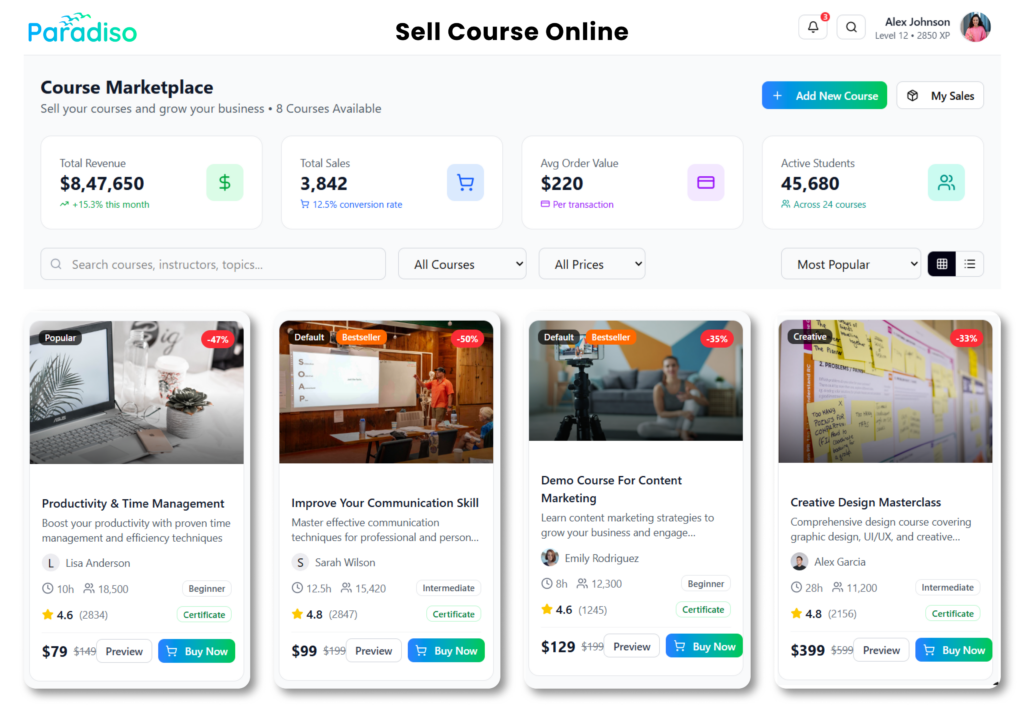Yes, it is possible to make money selling online courses. Many educators, experts, and business owners have found success in creating and selling their own online courses. However, as mentioned before, it can take time and effort to create a course that is in demand and valuable to students and market and promote the course effectively.
To make money selling online courses, it’s important to have a clear understanding of your target market and what they are looking for in an online course. It’s also important to set a competitive price for your course and to have a plan in place for promoting and marketing it to potential students.
Additionally, it’s important to have a plan for ongoing maintenance and updates to the course to ensure it remains relevant and valuable to students over time.
It’s also essential to have a strategy for delivering the content and to have a payment gateway.
Overall, while it is possible to make money selling online courses, it takes work and planning to be successful.
How to Create and Sell Your Own Online Course: Step-by-Step Guide
The step-by-step guide below will show you how to start and what steps to follow to create and launch a course
Step 1: Create an online course
creating an online course is to identify a specific topic or subject area that you are an expert in and that has a strong demand in the market. This could be a skill or knowledge that you have acquired through your work experience, education, or personal interests.
Once you have identified your topic, you should research to validate the demand for your course. This can be done by looking at search data, customer feedback, or by surveying your target market to gauge their interest in the topic.
Next, you will need to plan the structure and content of your course. This includes creating an outline of the topics that will be covered, identifying the learning objectives, and determining the format of the course (e.g. video, audio, text, etc.)
You will also need to create the course materials, such as presentations, quizzes, and assessments, and to record any video or audio content.
You can also consider hiring professionals to help you with the creation process, such as graphic designers for creating visual aids, or voice-over artists for recording audio.
Finally, you will need to test and review the course to ensure that it is of high quality and that it meets the needs of your target audience.
Once you have completed all of these steps, you will be ready to launch your course and start selling it to students.
Step 2: Select a selling platform
creating an online course is to select a platform for selling the course. There are several different options for selling online courses, each with its own benefits and drawbacks. Some popular options include:
- Your own website: This option allows you to have full control over the design and branding of your course and you can host the course on your own website, this will give you the possibility to sell the course through your own payment gateway.
- Online marketplaces: There are several online marketplaces such as Paradiso CourseCart, Udemy, Coursera, Skillshare, and others that allow you to sell your course on their platform. This option can be a great way to reach a large audience, but you will need to share revenue with the marketplace and may have less control over the design and branding of your course.
- Learning Management Systems (LMS): Some platforms like Paradiso LMS, Thinkific, Teachable, and Learnworlds, allow you to create and host online courses on their platform, with built-in features like course creation, student management, and payment processing.
- Social Media: Some educators sell their courses through social media platforms; this can be effective if you have a large following on social media platforms and you can use the platforms to promote your course.
When choosing a platform, it’s important to consider factors such as cost, ease of use, and features that are important to you. Some platforms may charge a percentage of the sale, others may charge a monthly or annual fee. Also, some platforms may have a limit on the number of students that can be enrolled in your course.
Once you have selected a platform, you will need to set up your course listing and create a sales page that includes information about the course, including the topics covered, the format of the course, the cost, and how to enroll.
Step 3: Promote your course
creating an online course is to promote it effectively to reach your target audience and generate sales. Here are a few ways to promote your online course:
- Utilize social media: Use social media platforms like Facebook, Instagram, and Twitter to promote your course. Create engaging posts, share testimonials and create a buzz around your course.
- Reach out to influencers: Find influencers in your niche who can help promote your course. They can share your course with their followers and help increase visibility.
- Create a landing page: Create a landing page on your website that is dedicated to your course. This will provide more information about the course, a list of the modules, and a call to action to enroll.
- Use email marketing: Use email marketing to promote your course by sending out a newsletter or an email campaign to your subscribers.
- Run ads: Consider running paid advertising campaigns on platforms like Google AdWords or Facebook Ads to reach a wider audience.
- Leverage existing networks: Reach out to your current networks and ask them to share your course with their friends and followers.













